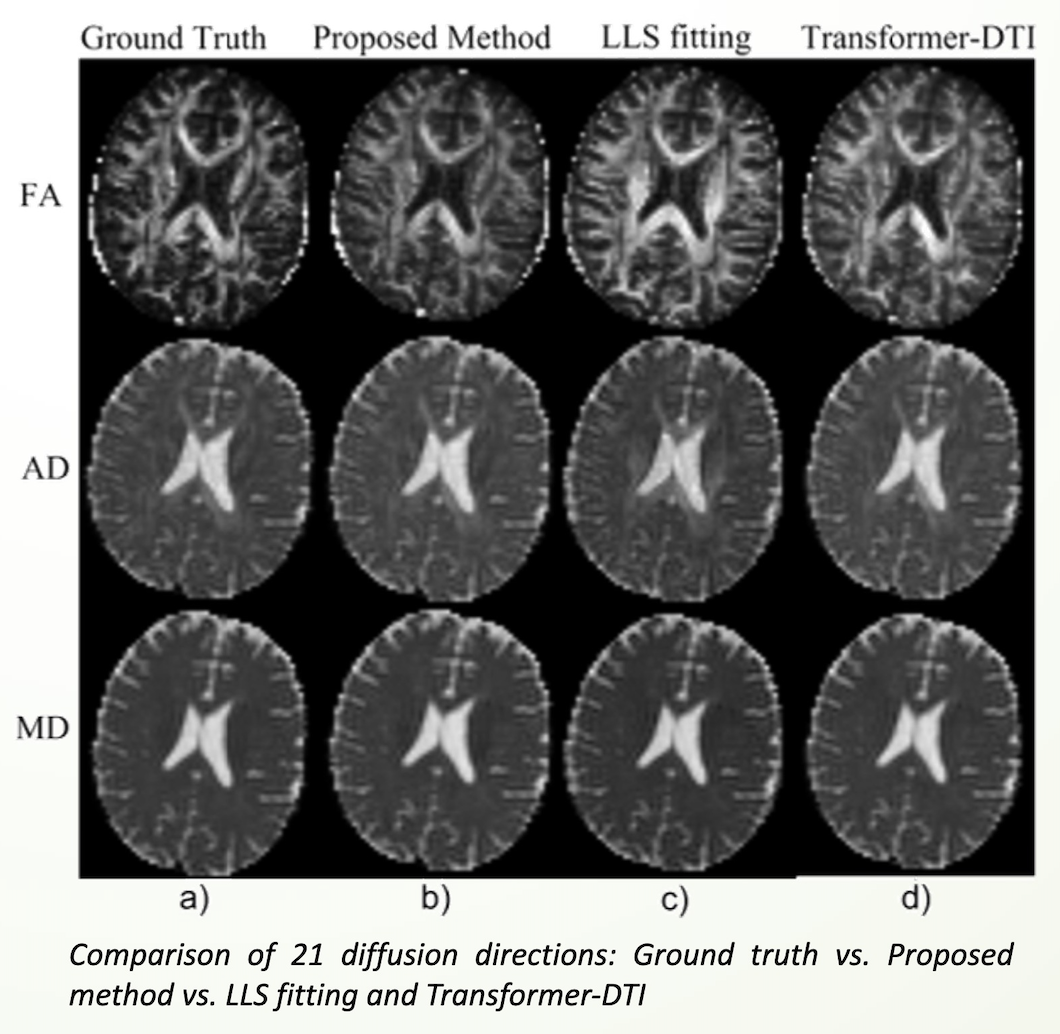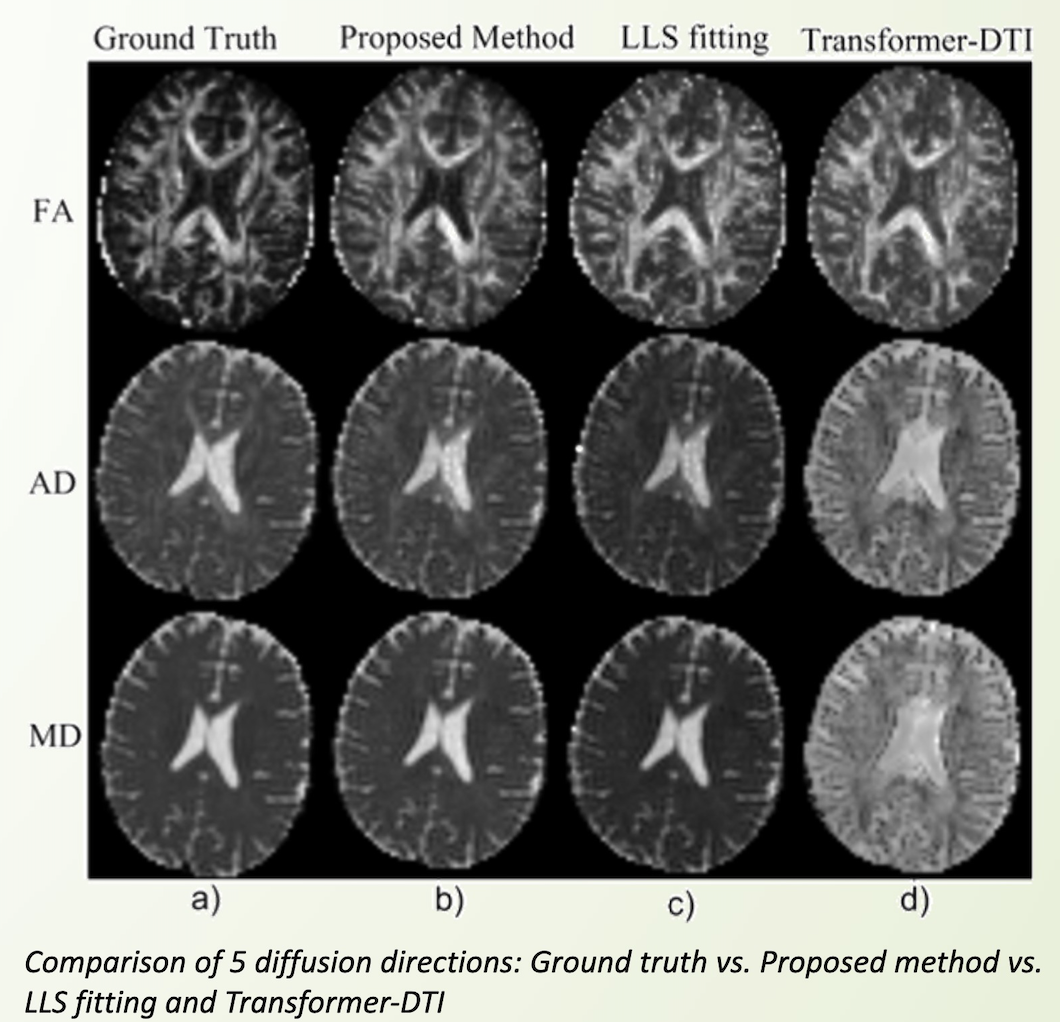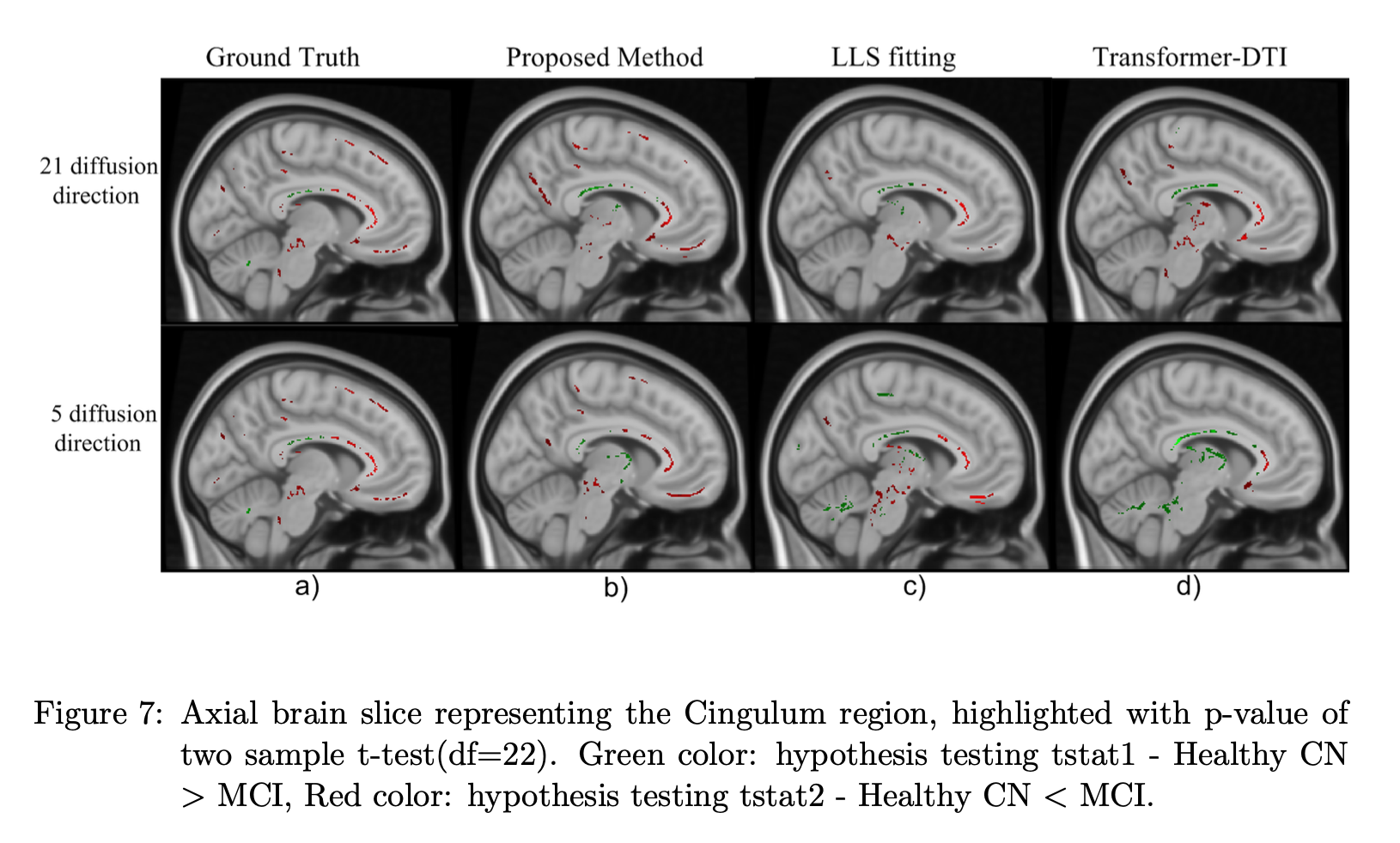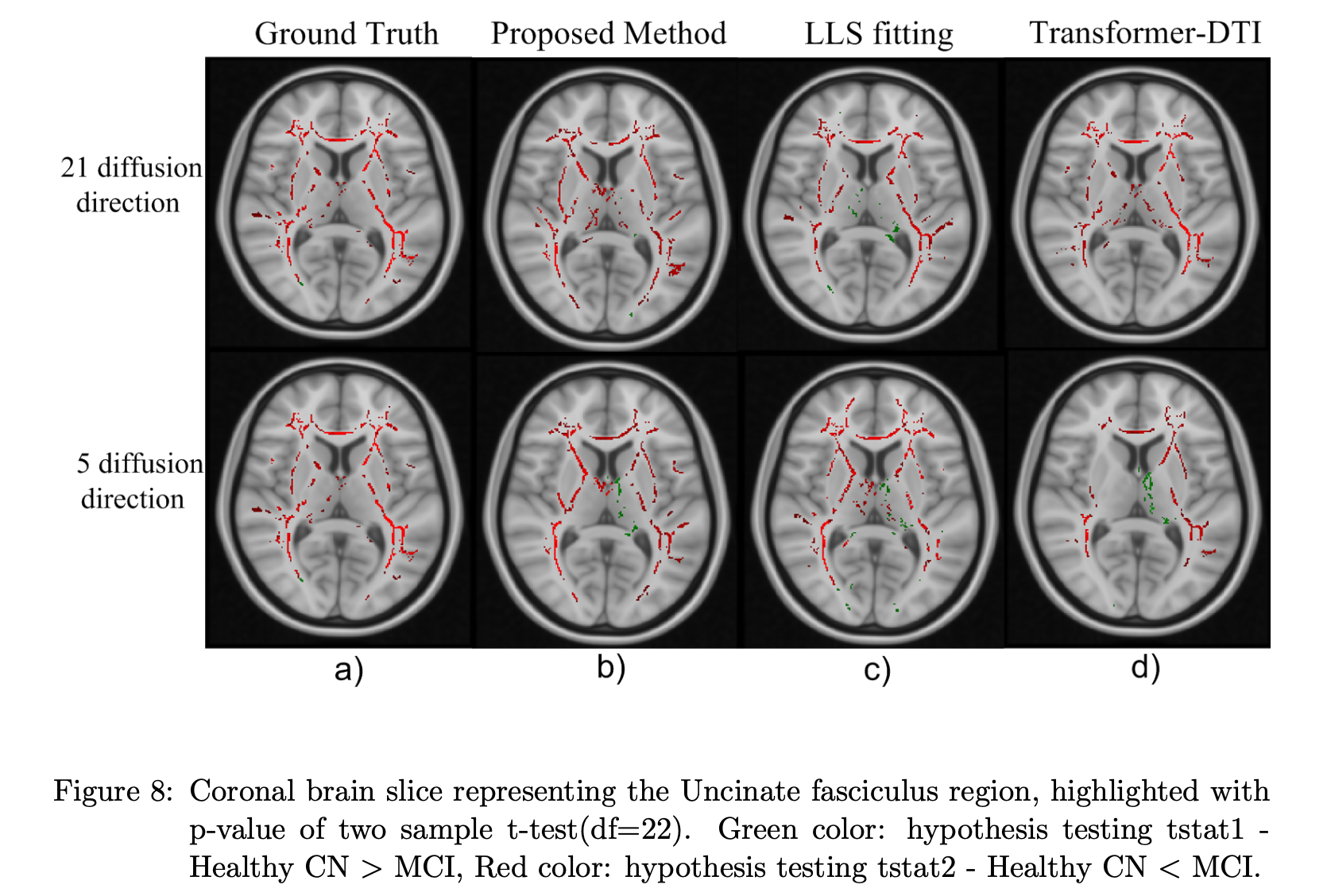


[W.1] Deep Learning Framework using Sparse Diffusion MRI for Diagnosis of Frontotemporal Dementia
This research presents a novel deep learning framework for early diagnosis of Frontotemporal dementia (FTD), a devastating neurodegenerative disorder affecting the frontal and temporal lobes of the brain. FTD leads to cognitive decline and behavioral changes, occurring in approximately 15-22 people per 100,000 worldwide (1.2-1.8 million people globally). Early and accurate diagnosis is crucial for timely interventions and appropriate patient care.
Our approach utilizes sparse diffusion measures extracted from neuroimaging data combined with advanced deep learning techniques to automatically learn relevant features from the data. The experimental results demonstrate promising potential in effectively distinguishing between healthy individuals and those with FTD, improving diagnostic accuracy and paving the way for future research in this critical area.
2023


[C.1] Early Diagnosis of Alzheimer through Swin-Transformer-Based Deep Learning Framework using Sparse Diffusion Measures
Our research investigates using Transformer-based deep learning to accelerate diffusion tensor imaging (DTI) processing and improve early Alzheimer's disease diagnosis. By applying advanced attention mechanisms, we've developed a model that generates critical quantitative measures using significantly fewer diffusion directions than traditional methods.
Our Swin-Transformer framework successfully generates fractional anisotropy (FA), axial diffusivity (AxD), and mean diffusivity (MD) measurements using just 5 and 21 diffusion directions. Testing on the Alzheimer's Disease Neuroimaging Initiative (ADNI) dataset demonstrates that our approach outperforms traditional linear least square methods while reducing scanning time by more than half. This breakthrough has significant implications for improving both the accessibility and accuracy of early AD diagnosis in clinical settings.
2023